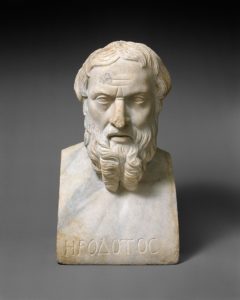 The 2020 Symposium of the National Classical Educators here in Phoenix was packed. Consequently, the architecturally fabulous Great Hall, sky bridges, and courtyards of Arizona State University’s BEUS Center for Law and Society overflowed with mission-driven teachers, historians, poets, headmasters, and curriculum developers. Everywhere you stood, piquant quotations from Plato, Cicero, Augustine, and Shakespeare sprang from the mouths of the overall young attendees. Ideas and ideals fueled passionate debates about history, philosophy, finer points of Latin grammar, and the meaning of the literary heritage we call the Great Books. Anyone accidentally wandering into these hallways might well ask: What is going on here?
The 2020 Symposium of the National Classical Educators here in Phoenix was packed. Consequently, the architecturally fabulous Great Hall, sky bridges, and courtyards of Arizona State University’s BEUS Center for Law and Society overflowed with mission-driven teachers, historians, poets, headmasters, and curriculum developers. Everywhere you stood, piquant quotations from Plato, Cicero, Augustine, and Shakespeare sprang from the mouths of the overall young attendees. Ideas and ideals fueled passionate debates about history, philosophy, finer points of Latin grammar, and the meaning of the literary heritage we call the Great Books. Anyone accidentally wandering into these hallways might well ask: What is going on here?
The answer is simple: a world where the once “ordinary” high standards of education characterized in our educational system is roaring back.
My role in the symposium has been to throw a spotlight on the centrality of the arts in our human experience. Of course, this crowd knows that fact well, although sometimes one does need to pipe up and jostle their recollections.
Officially I gave two talks on music historiography—how we came to acquire our Western music canon with its focus on the Three B’s (Bach, Beethoven, and Brahms) to the exclusion of so much else, and to sit on a panel dissecting the St. Crispin’s Day speech before the Battle of Agincourt in Shakespeare’s play Henry V.
 Yet, within this heady atmosphere, I want to dedicate this week’s essay to something that may strike you as wild and wooly. How did that happen?
Yet, within this heady atmosphere, I want to dedicate this week’s essay to something that may strike you as wild and wooly. How did that happen?
Hank, in his meticulous search for interesting works to feature in his “Friday Performance Picks,” found these guys. He sent me a link in an email and asked, “Should I use this?” “Oh no,” I wrote back. “Please let me do it!”
On the surface, what Tristan Clarke and Joe Buono do is campy. Maybe even a little outrageous. But listen again, and you will find two highly trained musicians who are using the medium of the melodica to deconstruct, reassemble, and present versions of significant repertoire so that we might more easily hear and see what is going on within their measures.
It’s probably best to start with their rendition of George Gershwin’s Rhapsody in Blue. No introduction is necessary.
The costumes may at first seem silly, but they convey the right mood to help students, in particular, sense the era that brought forth Gershwin’s fabulous music. In fact, if you close your eyes, you can imagine Gershwin’s crowd of friends at a party, discovering two melodica, and jostling each other out of the way to improvise some jazz on them.
So who are Clarke and Buono? And what is a melodica? Let’s take the instrument first.
A melodica is a free-reed keyboard, which means that each note has a small reed, similar to the construction of the keys in a pump organ or holes in a harmonica. The player’s mouth supplies the air, and the rest is physics. The concept of the melodica goes back to the 19th century. But the version mass-marketed today was designed in the 1950s by the American instrument builder Hohner.
At first it seems the oddest of instruments, right? It turns out, though, that melodicas are used world-wide to teach musical skills, especially in Japan. They are fun to play, inexpensive, portable, and more flexible musically than seems possible, at least until you hear them played with mastery by people like Clarke and Buono.
These two fellows met while students at Peabody Conservatory. Their goal, beyond having fun, evolved into a mission of musical education, not very different from the one that inspires the passionate teachers I have spent the week with here in Phoenix.
With a heaps of energy, Clarke and Buono capture not just the essence of famous compositions, but these arrangements inform the listener as to how each piece is put together. Costuming does part of the work, as do props. But more significantly, their gestures, facial expressions, and what you might call “body choreography” illuminate the musical ingredients insofar as melody, harmony, and rhythm.
With that said (and on the theory that you were won over by their rendition of Rhapsody in Blue), let’s see the video Hank sent me in that initial email, excerpted from Igor Stravinsky’s 1913 ballet The Rite of Spring.
Just as you might have been surprised by Clarke’s and Buono’s take on this piece, so too was the original audience surprised at the ballet’s premiere at Paris’ sparkly new Théâtre des Champs-Elysées. That performance today is legendary as one of history’s biggest theatrical scandals, although the degree to which people actually accosted each other can be contested. Indisputably, though, the dancers were stretched past their limits by the innovative, angular, sometimes sinister choreography created by the young Russian genius Vaslav Nijinsky. And the orchestra was baffled by Stravinsky’s irregular rhythms, electric melodies, and percussive effects that seemed antithetical to their instruments.
Today, of course, Rite of Spring is standard repertoire, and even good high school orchestras and bands play the work. When this performance by Clarke and Buono was posted, it gained 1.5 million views in just one day. Imagine the word-of-mouth social-media buzz that caused that to happen!
If you haven’t gotten enough, and you like the music from the video game The Legend of Zelda, try this last musical offering.
Seriously, how clever can you be? And how effective, particularly for young ears and eyes!
Today Clarke, a graduate of Juilliard, plays Principal Trumpet for the Jacksonville Symphony Orchestra. Buono earned two masters degrees Peabody and composes and teaches. But together they continue on their mission to create new performances and bring musical masterpieces to the ears of their listeners.
Are you smiling? I know I am.




Wonderful and captivating. Who could resist these two?